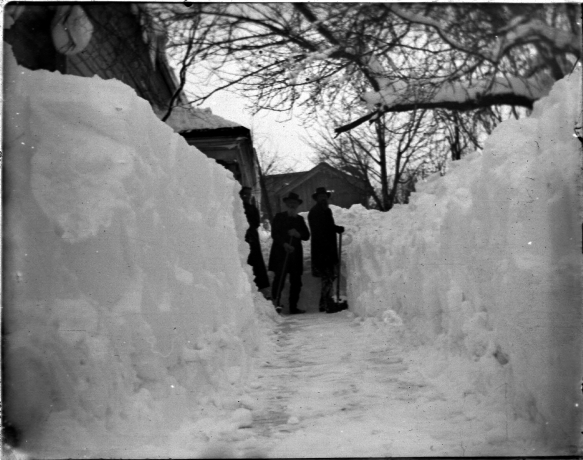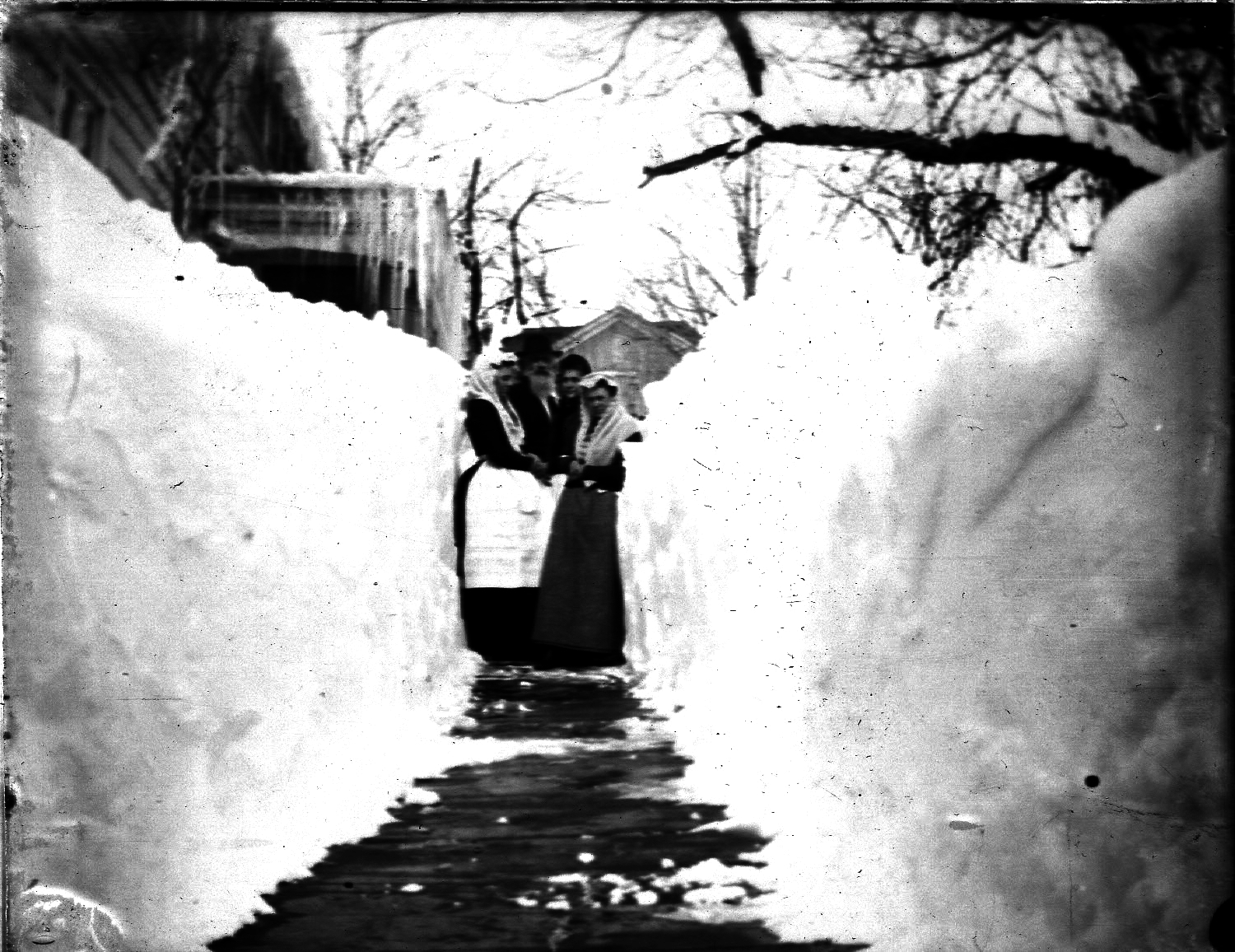Winter Then & NowPosted on April 13, 2015 |
Image

|
REMEMBERING CLAY Coping with Winter – Then and Now
In Clay, as in many other areas, we couldn’t believe the winter of 2014-15, especially February with no day above freezing and many nights below zero. We made sure we were stocked up on essentials when another snow storm was on its way: running to the store for bread and milk; Making sure we had jugs of water in case the pipes froze; candles in case the electricity went out; and in the country we made sure our heating oil or gas tank was not getting low. But what about the 1800’s in Clay? As many of us know, the first settlers that came in large numbers were the Germans and Dutch, followed shortly afterward by the English and many other Europeans. After the Revolutionary War when the Natives were driven west into reservations or sold their land, the government divided that land into military lots as payment to the soldiers who fought. In the Clay area around 1812, these settlers built log cabins, felled trees and planted crops. Many settled around the Caughdenoy area because of the Oneida River, the fertile soil and the large quantity of fish and game. How did they survive, especially in winter? It took a great deal of planning ahead. Once they had their log cabin and a water source, they needed a way to keep warm and to cook their food. For most, it was a large center fireplace, many times with an opening on both sides. In summer, an outdoor fire was used not only for cooking, but smoking meat and fish in preparation for winter. Some families also had a smoke house. Cooking and heating required much wood, which was in abundance when they settled. An entire acre of woodlot could be used up in a year. Some luckier families owned an open metal stove invented by Benjamin Franklin in 1742. One more necessary item was the outhouse (sometimes called the necessary). To avoid a shivery trip to it in the winter, every home must have a chamber pot to postpone that trip as long as possible. Preparations for winter began in spring – planning crops for planting. Not everyone had a totally self-sufficient farm. Following are some possible crops planted or wild, livestock raised and home-made items:* Corn and other fodder for livestock; wheat to grind for bread, vegetables of all kinds ( many kept in a root cellar dug below cabin, canned or dried; hops to make yeast; all types of fruit trees and berries; flax for spinning cows for milking and making cheese pigs for meat; chickens for eggs and food; sheep for wool to be spun and made into clothing; bees for honey; and more. They even used the native grown trees to make their own barrels and kegs to store food and hides from butchered animals for shoes and boots. They traded with others for what they needed. A very lucrative money making venture was trapping the eels in the Oneida River to be smoked and sent to New York. Hunting wild game was an added meat supply after the winter freeze set in, and the dressed meat was preserved by hanging from trees to be kept safe from wild animals. The farm animals had to be taken care of in winter by their owner. Getting to the barn usually meant putting up a tow rope from the house to the barn. To travel away from the farm meant using a sleigh hitched to a horse or oxen. Dirt roads were forgotten. A farmer would tamp down the snow for the sleigh’s runners, using a wooden board attached to a pole, to provide a way to and from his farm. Even the frozen rivers and streams were used. Hopefully, the family could get to church on Sunday and the children to school during the week. However, much “book learning” in winter was done at home. Everyone had chores. The girls learned to spin, sew and cook from their mother. The boys fed the animals, brought in wood and learned wood crafting from their father. Of course there were old fashioned games to play on long winter nights. Not many baths were taken in winter. Washings were hung inside the cabin. The first sign that spring was coming was the blossoming of the maple trees. They were tapped for their sap to make maple syrup. The streams began to run again. The birds returned and grass and flowers began to bloom. The whole process of living and preparing for winter began all over again. *Information from Florence Denman Watrous who passed away at 105 about three years ago.
Dorothy Heller, Historian

Other
Remember Clay Stories
Nathan Soule Part III
Remembering Clay | Apr 28, 2017
REMEMBERING CLAY
Nathan Soule’s Later Years in Clay (Part III)
Remembering the Clay Log Cabin Digs
Remembering Clay | Mar 8, 2018
REMEMBERING CLAY
Remembering the Clay Log Cabin Digs*
